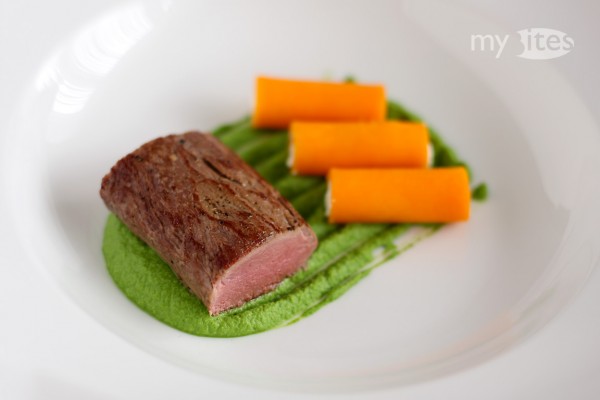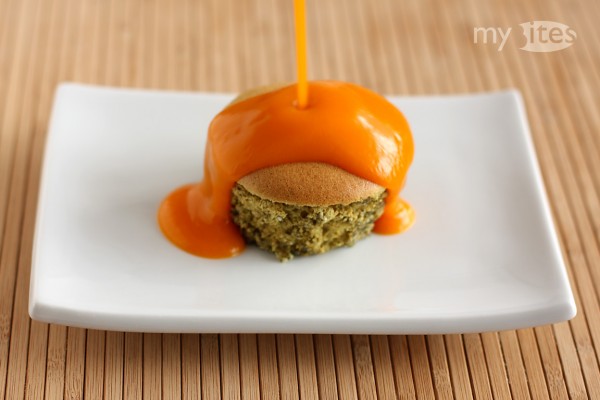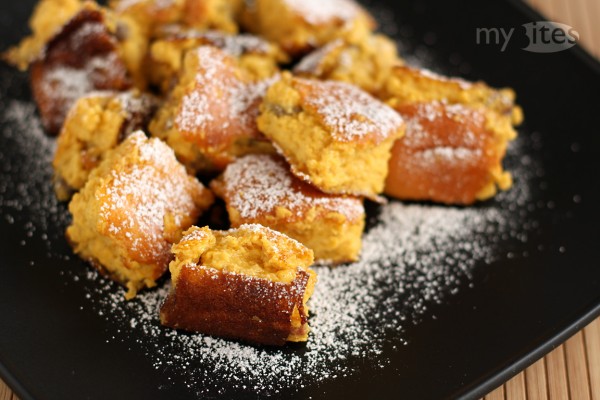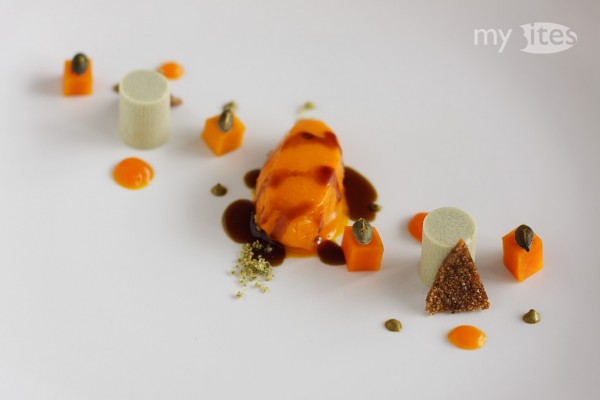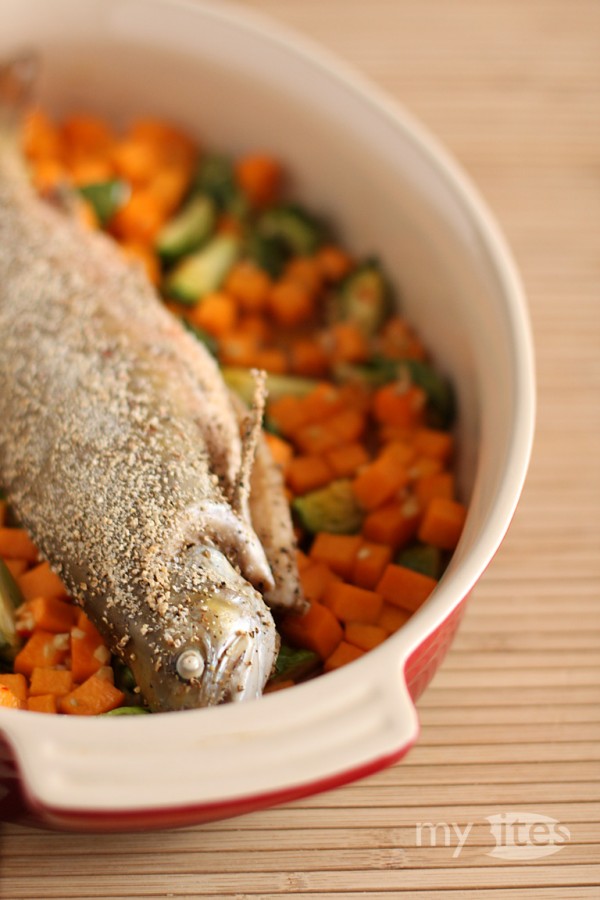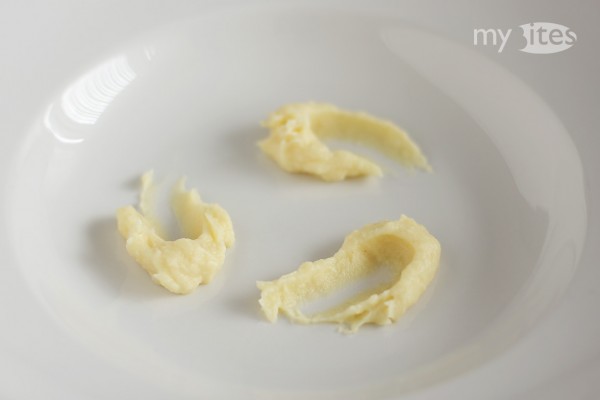Kale is definitely one of my favorite ingredients this winter. I usually buy one large or two smaller plants on Saturdays at the market and cook them quite often Asian style once or twice a weak. Because a kale plant is huge, it’s impossible to keep it in the refrigerator. Fortunately, in winter I can store it in a bag on my balcony, because cold and frosty nights are no problem for kale. Actually, temperatures below 0°C makes kale taste less bitter and more sweet. That is also a reason why it is such a great winter vegetable.
Tag Archives: butternut squash
Pumpkin Seed Soufflé with Butternut Squash Sauce
There are plenty of different butters and purees available made purely from nuts, such as peanut butter, almond paste or hazelnut nougat. They all work great in desserts, so I thought a butter made from pumpkin seeds might work in sweets well, too. Although its taste resembles the hazelnut nougat flavor, at the same time it also has a nice pumpkin seed aroma. The consistency of the pure butter is quite thick and first it looks brown, but if you loosen it up with some water or other liquid its color turns into dirty green and the butter gets creamy again. It can be used in batters or creams to both flavor and color them. This also gave me the idea to try the pumpkin seed butter in a soufflé.
Butternut Squash Kaiserschmarrn
Kaiserschmarrn is prepared the traditional way usually with apple puree and a vanilla-milk batter. With some imagination it can be turned into thousands of new variations. One possibility is the Caribbean coconut Kaiserschmarrn I posted a month ago, or another example would be this current butternut squash version – which is actually lactose-free. The squash adds both flavor and color to the final result, which is also the reason for its beautiful yellow appearance. I also experimented blending the softened squash with milk, but the result was much better when I used the reduced stock cooked from the seeds and skin of the butternut squash.
Butternut Squash with Pumpkin Seeds
Thinking about vegan desserts it was surprising to me how much our usual desserts rely on animal products. Many – if not most – recipes contain either eggs, gelatin, butter, milk, cream or honey. Sometimes not even fruit sorbets are pure because adding some egg white or mascarpone makes their texture less crystalline. On the other hand, many animal products can be substituted: Instead of milk or cream you can create nutritious milk from rice or nuts. In many cases, butter can be substituted by flavorful vegetable oils. Honey too can be replaced by various natural sweeteners such as sugar beet molasses, agave or rice syrup. I believe that all these great plant-based products should not be treated as substitutions only, but rather as full-valued products. If we would stop thinking of them as substitutions and rather see them as full-valued ingredients, many new and creative desserts could be created.
Char with Asian Style Squash and Brussels Sprouts
Oven baked whole trout or char is one of my favorite dinners. It is simple, fast, delicious and infinitely versatile. Usually, the fish can bought already cleaned and it doesn’t have to filleted. It can be stuffed and flavored with almost any kind of herb, spices or citrus fruits. Also the vegetables can be adjusted according to what you have at home and what vegetables are currently in season. For example, during autumn I prefer to use various mushrooms or fennel and apples. In winter, broccoli with white wine and garlic is great, and also this current combination of butternut squash and Brussels sprouts.
Pigeon Breast with Quince Sauce and Autumn Vegetables
I wondered why red or white wine is usually added to reduced sauces. Usually the wine is allowed to cook off completely, so in most cases – as long as you’re not cooking specifically a red wine sauce – wine is not so much added for its taste than rather for its acidic component. Another function of the wine is to scrape off the brown roasted parts from the bottom of the pot, but for this purpose water works perfectly well too. Instead of the wine I had the idea to add some quince as an acidic component. Cooking quince over a long time magically enhances its flavor, so I thought it would work ideally in a sauce too, since the the basic stock had to be cooked for several hours. The quince worked really well in the sauce, so if you have any problems with adding alcohol to a sauce – although the alcohol will cook off completely – during autumn you can add some fresh quince instead.
